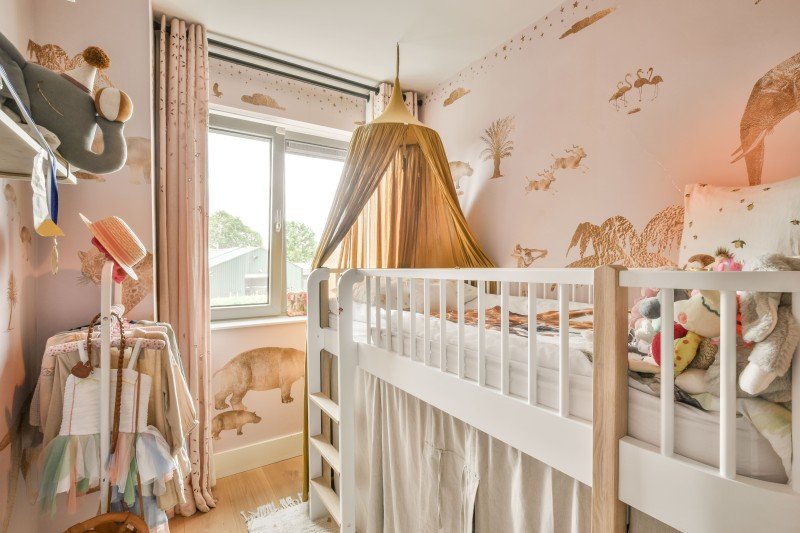10 Facts About Bunk Bed That Can Instantly Put You In An Optimistic Mood
A Comprehensive Guide to Children's Bunk Beds: Styles, Benefits, and Safety Considerations
Bunk beds have actually become a popular option for households aiming to take full advantage of space and supply a fun sleeping environment for kids. With their unique design, they provide a creative and useful service for shared bedrooms, playrooms, or even guest lodging. This short article checks out the different designs of children's bunk beds, their advantages, safety considerations, and responds to some often asked questions.
The Allure of Bunk Beds
Kid's bunk beds are more than simply space-saving structures; they are likewise an entrance to daring dreams and imaginative play. Below is a detailed examination of their various advantages.
Advantages of Bunk Beds
- Space-Saving: Bunk beds effectively utilize vertical space, making them a perfect choice for smaller sized spaces.
- Playful Design: Many bunk bed styles consist of slides, camping tents, and themed elements, triggering imagination and excitement.
- Partner Sharing: Bunk beds are ideal for siblings sharing a room or accommodating sleepovers.
- Versatile Use: Some designs can be separated into two individual beds, offering versatility as kids grow.
- Storage Options: Many bunk beds feature built-in drawer storage or racks, further boosting their practicality.
Styles of Children's Bunk Beds
The variety of bunk beds readily available today caters to different choices and requirements. Below is an overview of some popular styles.
Style
Description
Best For
Requirement Bunk Bed
A standard design including one bed stacked above another.
Brother or sisters sharing a room.
Loft Bed
Comparable to a bunk bed without the bottom bunk, enables a work area or play area listed below.
Minimal space for play/desk.
L-Shaped Bunk Bed
Two beds arranged in an L-shape, often with extra sections for storage or play.
Special room layouts.
Twin Over Full
A twin bed over a complete bed, accommodating different sleep requirements.
Growing children and teens.
High Sleeper
Stands even higher than a loft bed, typically featuring a desk or play area below.
Older kids needing more play/desk space.
Camping Tent Bunk Bed
Bunk beds with a canopy or tent-like structure, producing a cozy, enjoyable space.
Active and imaginative kids.
Secret Features to Consider
When picking the best bunk bed for kids, the following features deserve considering:
- Material: Bunk beds can be made from wood, metal, or a mix. Danille Katon has its unique visual and durability.
- Weight Capacity: Always verify the weight limitation of the bunk bed to guarantee it can accommodate your kids securely.
- Safety Rails: Ensure the top bunk has durable rails to prevent falls.
- Ladder Security: A well-designed ladder needs to use easy and safe access to the upper bunk.
- Ending up: Ensure any surfaces are non-toxic and safe for kids.
Security Considerations
Security is critical when it comes to children's bunk beds. The following guidelines ought to be abided by:
- Age Appropriateness: Generally, children under six years of ages need to not oversleep the upper bunk due to safety risks.
- Strong Construction: Ensure the frame and products are strong and can support the weight without drooping.
- Routine Maintenance: Periodically look for loose screws, bolts, or other elements that may need tightening.
- Clear Play Area: Keep the area around the bunk bed devoid of toys and obstacles to minimize tripping hazards.
Setting Rules for Safe Use
Establishing guidelines for bunk bed usage will assist ensure security:
- Limit Jumping and Climbing: Children should be advised against jumping from the top bunk and getting on the sides.
- Supervising Sleepovers: Monitor young guests while they are utilizing the bunk bed for the very first time.
- Inform on Ladder Use: Teach how to use the ladder safely, stressing the importance of facing the ladder when climbing or down.
Regularly Asked Questions
1. What age is suitable for a kid to oversleep the leading bunk?
Most producers recommend that kids should be at least six years old to sleep in the upper bunk. This guideline is developed to mitigate the risk of falls.
2. Can bunk beds be customized?
Yes, lots of manufacturers offer customizable options, consisting of colors, materials, and additional functions like drawers or desks.
3. Are bunk beds safe for weight?
Bunk beds have weight limits, generally ranging from 200 to 400 pounds, depending upon the model and product. Always examine the producer's requirements.
4. How do I preserve and clean up a bunk bed?
Routinely examine for loose parts, keep the bed clean by cleaning down surface areas, and make sure the bed linen is fresh to promote a safe and sanitary sleep environment.
5. Can bunk beds be separated into individual beds?
Lots of bunk beds come with an alternative to separate them into 2 individual beds, offering long-term versatility.
Kid's bunk beds are more than mere furnishings; they are a practical, versatile, and creative part of a child's space. With numerous designs offered and numerous safety considerations to bear in mind, parents can select the perfect bed that fits their space, meets their children's needs, and imparts a sense of adventure. By understanding the advantages, styles, and precaution connected with bunk beds, households can develop a delightful and safe sleeping environment for their children. Whether for brother or sisters sharing a room or space-saving solutions, bunk beds stay a precious choice for many families.
